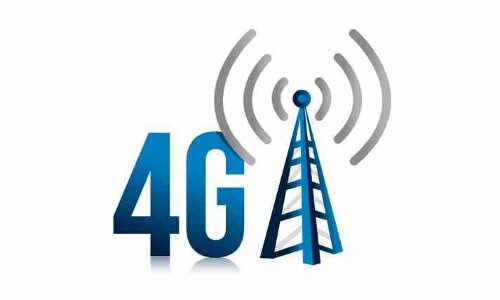A report published by Ericsson revealed that in the year 2009, the network traffic for data services exceeded the data traffic for voice calls. It is estimated that the demand for data will be much higher in the coming years. This is because more and more people are buying smartphones and data enabled devices.
To meet this demand effectively, network providers need to invest in infrastructure to ensure that the increase in demand is met and also to ensure that the requirement for faster services are met.
3G Vs 4G
3G marked the beginning of mobile internet. The latest development in these networks is 4G. There are no pre-defined standard for a 4G network, but it simply is called so because it is significantly faster than 3G.
4G refers to the fourth generation of networks and these networks provide broadband speed data services to the users. Theoretically speaking, 4G networks give speeds of up to 100 mbps. But practically speaking, the speeds are up to 6 mbps to 30 mbps, because of various disturbances in the surrounding environment like buildings and trees.
How Good is 4G?
4G provides a higher speed and is similar to the speed we receive on our computers through a broadband connection. The higher capacity of 4G will allow users to use applications such as video calling and streaming video on YouTube and get a smoother picture. Internet based applications would become quicker as data speed increases because 4G reduces latency.
This is helpful while playing online games. It reduces lags in voice calls and loading time of other applications. The range allotted to a telecom operator is also utilised effectively because of 4G. This is because more data can be transferred.
What is the Difference?
4G works on the radio system like 3G where chunks of data are transmitted through radio signals. But the main difference is that 4G works using the Orthogonal Frequency Division Multiplexing (OFMD) technology. This is the same technology that is used in radios, digital televisions and Wi-Fi. OFMD increases the capacity of the network by dividing the signal into parallel data streams. This has resulted in more data being sent over the same frequency.
The frequencies of a 4G network are different from a 3G network. Therefore, a different modem is required in a mobile phone to be compatible with the network. This is the reason that a 3G enabled device will not support 4G.
4G does not operate in the same frequency in every country. So, a person might not be able to use 4G services in a country where the frequency is different from his home country. 4G is an all-IP system which means that now even voice data will be transferred through internet protocol standards.
4G is set to enhance user experience by a great deal. It will reduce the time lags in buffering videos, video calling, using maps and so forth. People will now be able to stream HD videos without any lags. It will lead to an increase in cloud computing through mobiles. This means loading files, music and other data from a virtual drive. This would not have been possible at 3G speeds.
